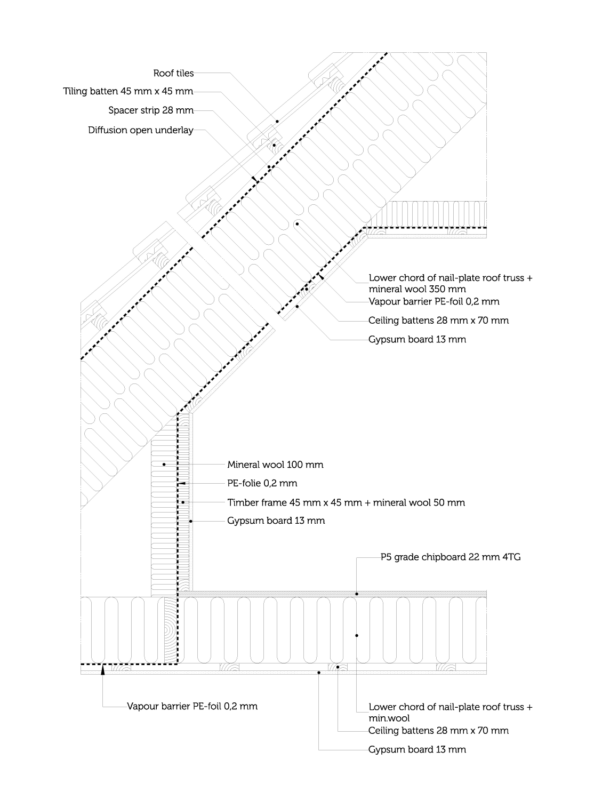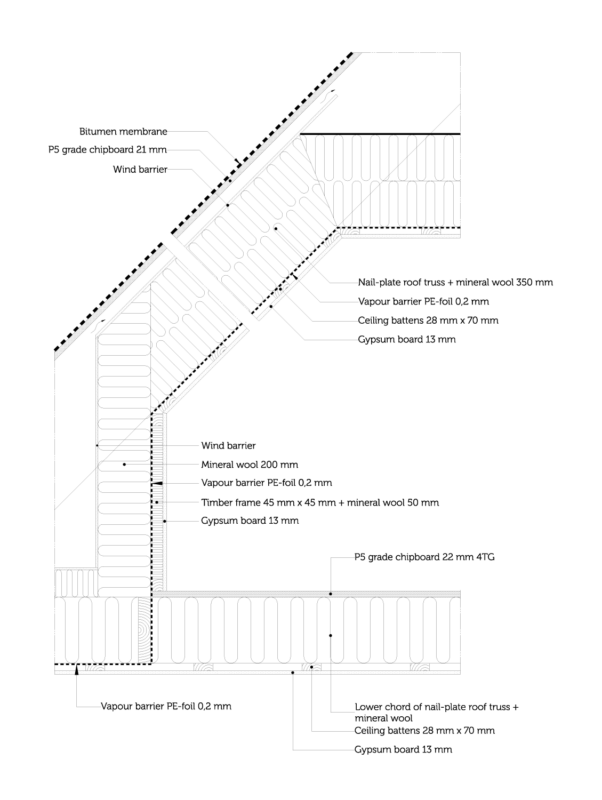Flat roof | Roof element | Trusses | Roof structure with tiled roof or sheet metal roof | Roof element for PVC-covering | Insulated attic
The roof is one of the most important structures of the building since its durability determines the building’s lifetime and operational reliability. The roof has to carry the loads arising from rain, snow and wind as well as the occasional movement of persons. Therefore the roof has to be built rigidly enough. The top layers of the roof have to withstand large variations in temperature (from the hot sun in summer and low temperatures in winter) and transfer precipitation from the roof into the drainage system.
The roofs of wooden frame element houses are usually built in three ways: using rafters, nail-plate roof trusses or elements.
Using rafters for building a roof is the traditional way that can nowadays be accomplished even more effectively using factory-produced rafters. Despite the use of factory-calibrated and exactly cut rafters for building the roof it is still labour-intensive and time-consuming. That is why we mainly offer roof elements for roof construction, but for some complex roof designs the use of rafters is still the only option.
The constructive composition of the roof in terms of the materials used is the same irrespective of whether roof elements, rafters or nail-plate roof trusses are used. With regard to roof elements, most of the material installation is done at the factory.
Flat roof
Flat roofs use solid wood compound beams connected with nail-plates or some other type of beams – I-beams, laminated timber or Kerto-wood beams, sometimes also nail-plate roof trusses with girders. The choice of beams depends on the width of the spans and the loads exerted on the roof. The flat roof elements have been prepared at the factory in such a way that on the construction site they only require installation and subsequent sealing of the seams.
With flat roofs the load exerted by snow has to be considered as well as the water released by the melting of snow and making sure that rainwater is transported away from the roof. Flat roof elements are designed and produced with the minimum necessary gradients to ensure that water will be transported away from the roof.
Flat roofs are very often also designed with a roof terrace, which sets out extra demands on the structure – the load exerted by the movement of people, trample resistance of the roof covering, the need for additional layers (floor elements for the terrace) and roof terrace barriers as well as the requirements regarding the safe fastening of the above-mentioned structures.
The accompanying image shows a principal solution for a flat roof.
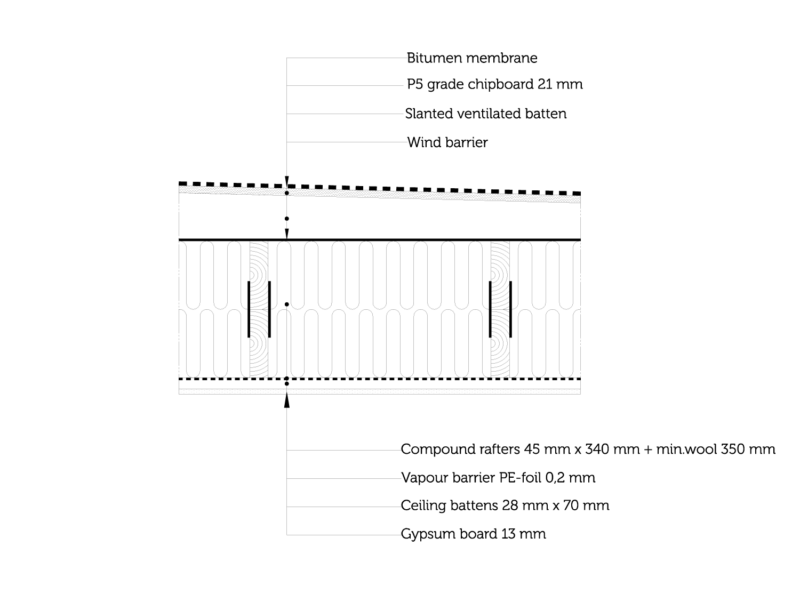
Roof element
Factory-produced roof elements consist of rafters (usually double rafters), insulating material, underlay, ventilating lath, vapour barrier foil and chipboard or OSB board to provide the element with the necessary rigidity. The constructive solutions for the top part of the roof element are different depending on the roof covering – tiles, sheet metal or rolled roofing material.
The rafters are calculated based on load bearing capacity and sagging. The choice of rafters depends on the width of the span between the ridge beam / load-bearing internal wall and the external wall. For the rafters we use solid wood, solid wood compound beams connected with nail-plates, I-beams, laminated timber or Kerto-wood. The use of double rafters is most common in roof elements.
The maximum width of factory-produced roof elements is 2.4 m and the length is 12 m. The maximum dimensions of the elements are primarily based on restrictions arising from transport equipment, but work safety at the factory and on the construction site also needs to be considered.
Roof element for tiled roof or sheet metal roof
For a tiled roof or a sheet metal roof we install at the factory the underlay, which is fastened to the elements with ventilating laths. After the installation of the roof elements on site, the installation of the tiling or sheet battens and of the corresponding roofing material may begin. The roofing material will be installed by their supplier.
The accompanying image shows a principal solution for a tiled roof or a sheet metal roof.
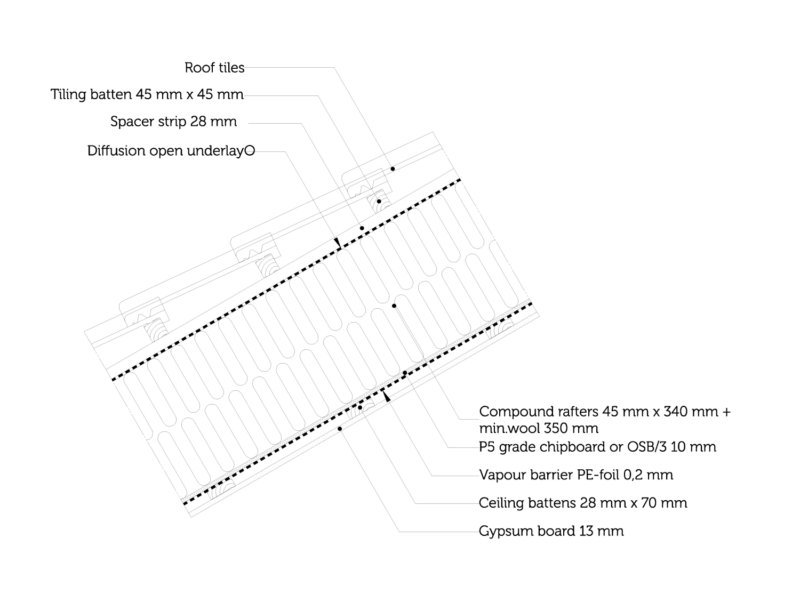
Roof element for PVC-covering
In the case of PVC or some other similar roofing material, we deliver roof elements which have a top layer of highly moisture resistant chipboard or OSB board, which forms the underlay for the PVC. Immediately after the elements have been installed the final roofing covering can be installed. If, for some reason, it is not done, the roof has to be covered with a temporary cover to prevent rainwater from entering the structure.
The accompanying image shows a principal roof element solution for a PVC, bitumen membrane or shingle roof.
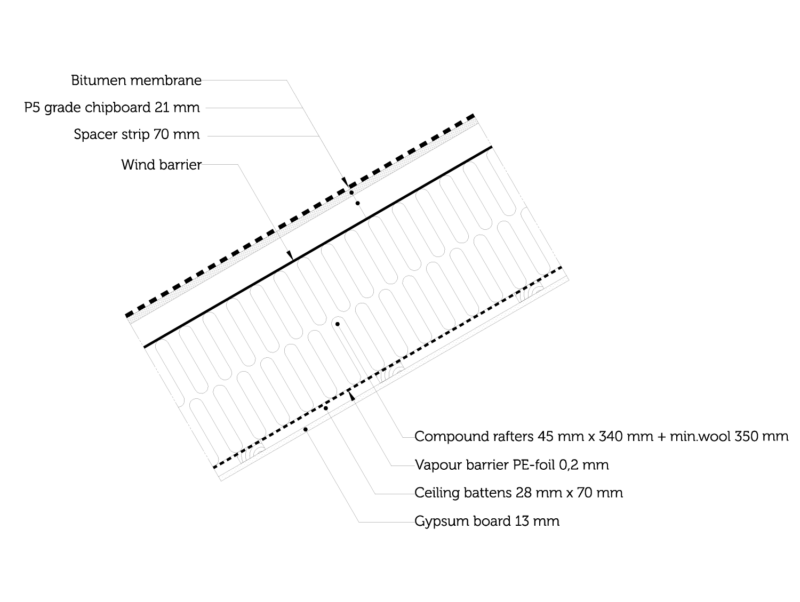
Trusses
The construction of a roof using nail-plate roof trusses is significantly faster than building a roof using rafters, but there are certain limitations – it is not possible to construct high open rooms. At the same time, the use of roof trusses allows the building of roofs over wide spans between supports.
When installing trusses, it is important to first ensure that the installed elements have been connected to each other and that the load-bearing structures of the roof are completely rigid. For that reason wind braces are installed on the trusses.
The materials installed on the trusses depend on the roof covering – tiles, sheet metal or rolled roofing material. The thermal insulation of the roof, vapour barrier foil and ceiling battens are installed on the lower chord of the roof truss, i.e. the ceiling level. One exception is buildings with an insulated attic where the trusses form the floor for the attic as well as the roof.
Nail-plate roof trusses are produced by our subsidiary OÜ Rebruk GH.
Roof structure with tiled roof or sheet metal roof
The accompanying image shows a principal solution for a roof structure with nail-plate roof trusses for a tiled roof or a sheet metal roof.
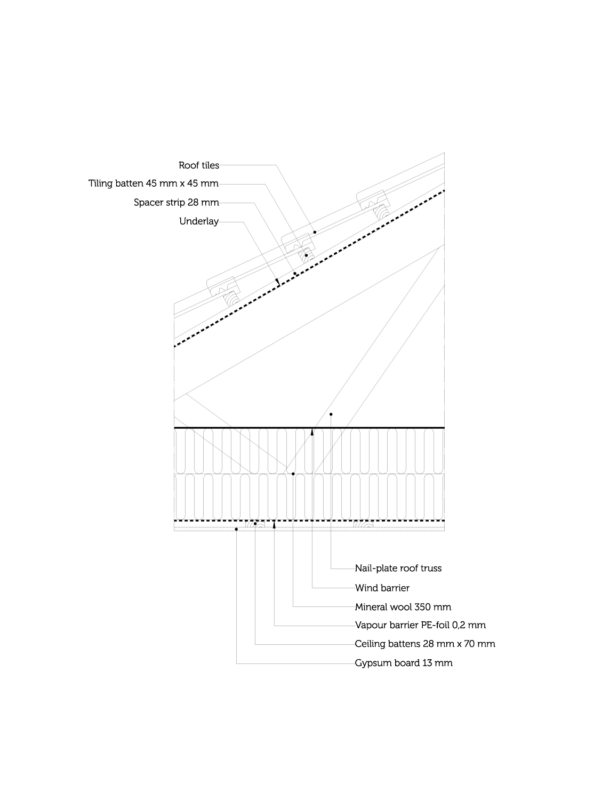
Roof structure with PVC-covering
The accompanying image shows a principal solution for a roof structure with nail-plate roof trusses for a PVC, bitumen membrane or shingle roof.
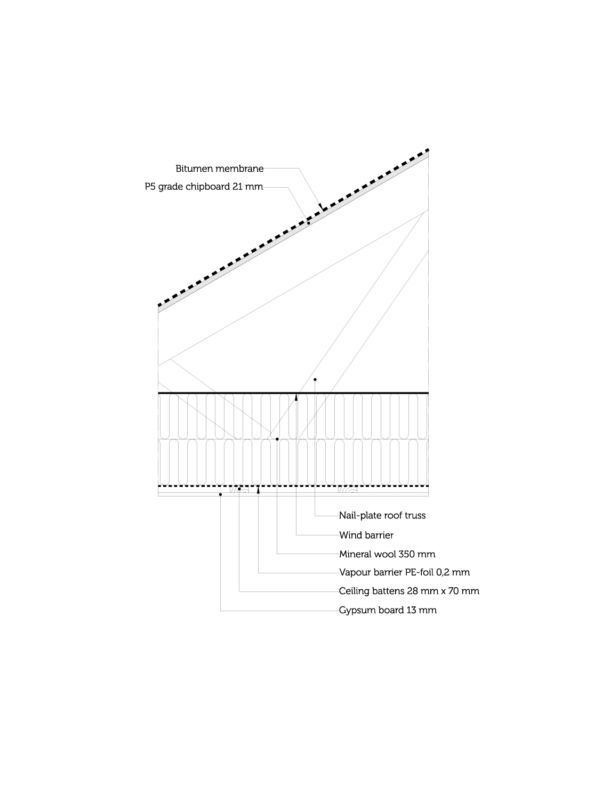
Insulated attic
The accompanying images show principal solutions for houses with insulated attics.
